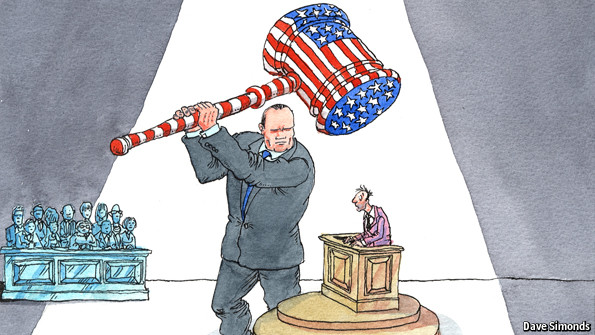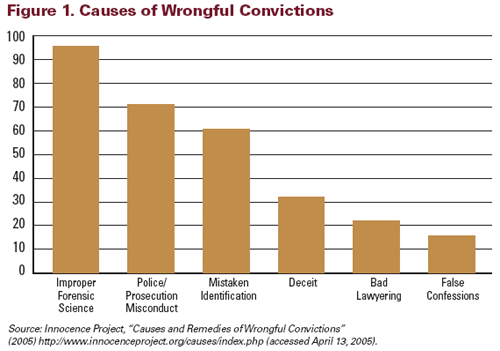 |
Despite its economic pain, tough on so-called crime remains a popular political chant, indeed vote-getter, even while many in the United States try to come to grips with a society that has less than 5% of the world’s population yet more than 25% of its prison population. No less startling are prison sentences, meted out with perverse regularity in this country, which send mostly young men of color to prison often for many decades for essentially health and mental health related issues dressed up in criminal drag in which they simply want to get high or help others to do so.
Add in to the matrix a growing and aging population of mostly low level so-called white collar offenders and we see a national prison complex in which 60 % of the federal inmate population, or approximately 150,000 prisoners, serve years in prison camps or low security jails far from their families without posing any threat to their community as a whole. To jail these non-violent offenders costs approximately $29,000 per inmate per year instead of the $3,700 it would run through community based supervision and treatment of these same women and men if kept at home and employed in their own communities with appropriate supervision.
Among other things, Part I of “Prison America” provides a nuts and bolts primer of sorts of just how the DOJ investigates, prosecutes, and imprisons millions of Americans in a seeming and endless thirst to target the most politically powerless among us. In particular, it focuses on just how the DOJ singles out those daring enough to demand justice through an adversarial system which thrives on its absence, and which falls most harshly upon those foolish enough to demand and pursue their full day in court in a chase that almost always ends up with a vindictive and additional penalty for that right.
In describing the federal criminal justice system Part I makes use of such terms of art as conspiracy, cooperators, informants, superseding indictments, judicial discretion, sentencing guidelines, mandatory minimum sentences and relevant conduct. While such terms and procedures are commonplace for the courts and attorneys involved in the federal criminal justice game, to the novice, indeed, even the many defendants trapped inside it, they remain very much almost mystical phrases with no practical reference point or framework within which to understand how an abstract legal theory suddenly becomes very ugly and unduly punitive in practice as the cell door slams for years.
In this light, welcome to the world of “Jerome,” a not too hypothetical montage of cases which, in one construct or another, puts a real time face on events that have saturated the prisons of this country under the stewardship of a two-term presidency launched to power with the commitment to pursue equal and color blind justice for all. Obama lied. Today, that dream remains very much just that- a mythical political cry always one step beyond the reach of most in this country who do not have the right color, prominence or connections.
Jerome is a 27 year old black male who graduated from college in upstate New York and who plays semi-pro lacrosse in a Canadian based league. He works for a sporting goods chain based mostly along the Canadian border to supplement his meager lacrosse contract. He has just spent a weekend holiday with his long-time girlfriend in Montreal driving to and from Canada with his dad’s car. The couple have been to Montreal many times over the past several years where he plays lacrosse, using the same car on each trip. Early one Monday morning they passed through a U.S. Port of Entry into the United States and proceeded south to the warehouse-office of the sporting goods chain for which Jerome works. About a half an hour later, he pulled into the parking lot of the warehouse, exited the car, and went into its trunk from which he removed two large hockey bags. While his girlfriend remained in the car, he entered the warehouse, spoke to his boss for a few minutes and then left, without the two bags. Jerome drove off, but several miles away ran into a ditch in order to avoid a deer that raced across the road.
Smashing against a large boulder in the ditch, the car began to smoke, and its trunk popped open from the force of the impact. Jerome’s girlfriend was cut by flying glass. Within seconds of the accident a US Border Patrol Agent happened upon the scene. Finding both Jerome and his girlfriend injured the agent radioed for assistance and helped to remove them from the car now beginning to smoke heavily. Within minutes another Border Patrol Agent arrived. Not long afterwards while looking into the opened trunk, he saw two large duffle bags; one was ripped open with large bricks of marihuana plain to see inside. While at the hospital, Jerome admitted to yet another agent that he had picked up the bags in Canada along with one other small one which he had dropped off at his bosses warehouse not long before.
According to Jerome it had been his first such trip and that he had been asked to make the run by his boss and was being paid one-thousand dollars to do so. He concluded by noting his girlfriend had no knowledge of the marihuana and that he was to drop off the remaining two bags at an address in New York City. The bags recovered from the car each contained 75 pounds of marihuana. Not long thereafter a search warrant was obtained by federal agents and the warehouse raided. Recovered were not one, but two additional bags of marihuana which in look and size appeared to be identical to the ones recovered earlier from the car. Each contained 75 pounds of marihuana for an additional 150 pounds of the substance.
In a separate location in the warehouse were recovered 30 additional hockey bags each with 75 pounds of pot, for a total of 1500 pounds of pot- the bags themselves were a different size and color than the one recovered from Jerome’s car. At the time of the raid Jerome’s boss was also arrested. Later that day Jerome appeared in federal court and was arraigned and released on bond. At that time he was charged solely with possession of the 150 pounds of pot recovered from the car he was driving. His girlfriend was not charged.
At first blush, this not too hypothetical case appears to be very much a straight forward one. Putting aside the issues of whether this pot prosecution should end up in federal court at all, as well as the propriety of the search of the car, and whether the statement made by Jerome was voluntary or not, it seems to be an otherwise simple possession case of a substance now lawful in a majority of the United States. To the untrained eye, the amount recovered from Jerome might appear to be large. However, with millions of kilos of pot floating throughout this country every year in both lawful and illegal sales, it is nothing; a veritable drop in a bottomless bucket.
So what’s to become of Jerome? Given the absence of any prior criminal record, as well as the fact that he is a college graduate and athlete, upon a plea of guilt to the simple possession charge he was arraigned upon, under a rational, just sentencing scheme before an unshackled judge, Jerome could expect a sentence ranging anywhere from probation, to home confinement, to perhaps six months in a prison camp to be followed by supervised release. However, In the real time political and often vindictive world of federal prosecutions, that would not prove to be the case at all.
Other than the statement he provided to agents at the time he was arrested, Jerome refused to cooperate any further with law enforcement. Angered by his refusal to cooperate with the on-going government investigation, the federal prosecutor set out to build a far more serious case against Jerome. Thus, because a government check of border crossing records showed that he had been in and out of the US to Canada some two times a month or more for well over a year, the prosecutor assumed that the primary purpose for each such trip was to transport similar loads of pot back into the United States thereby increasing the “ghost” loads Jerome was “responsible” for from the 150 pounds recovered from the car to over one-thousand five hundred pounds of pot which the government assumed he had previously transported.
Although little more than blind supposition, the prosecutor’s theory was to find some support — albeit self serving– when Jerome’s boss (who faced a mandatory minimum sentence of ten years in prison himself on the basis of more than a thousand kilos of pot recovered in his warehouse as well as his own admissions) agreed to cooperate against Jerome and others who worked for him at various times in his distribution network.
In debriefings, the boss admitted to having distributed many thousands of pounds of marihuana in the Metropolitan New York region over the previous five years. According to him, during the last year Jerome had been one of his transporters running loads from Montreal to his warehouse and, though uncertain about the exact amount, suspected that he had transported approximately 1500 pounds of the substance- coincidently, of course, the very figure that the government assumed he had transported.
More important, the boss identified two of the hockey bags found in his warehouse at the time of the raid, and which looked similar to the two recovered from the car, as having been delivered to him that very day by Jerome. He also told prosecutors that on two occasions Jerome’s girlfriend was present, although silent, when they had held discussions about picking up a load of pot. Although at the very top of a fairly sophisticated and large pot distribution ring himself, in exchange for his cooperation in the prosecution of but subordinates and customers, his sentence would end up to be but 18 months in prison.
As for Jerome, not long before he was to enter a guilty plea to possession of the pot recovered from his car, he learned that the government was preparing to indict him for possession of one hundred kilos of marihuana or more (some 250 pounds) on the basis of the pot recovered from his car and the additional 150 pounds of pot which his former boss told investigators he had received from Jerome the day of the raid. With this increase, if convicted on the new charge, Jerome faced a mandatory minimum of five years in prison instead of the far lower sentence that he could reasonably expect to receive as a result of the initial charge for which he was arrested.
Unwilling to accept that “deal,” Jerome was planning to proceed to trial when he learned that prosecutors had decided that if he did not plead guilty to the 100 plus kilo charge a second or superseding indictment against him would be obtained which would not only charge him with distribution of more than a thousand kilos of marihuana (some 2500 pounds or more) but also charge his girlfriend. The new indictment would stem almost solely from the unsubstantiated information provided by his former boss who had cut a deal with the government to save himself.
Not long thereafter, Jerome pleaded guilty to a charge that required him to go prison for a minimum of five years. His father’s car was also forfeited to the government. In so doing, he admitted to the court that he had conspired to possess and distribute the three hundred pounds of pot recovered from his car and from the two additional hockey bags seized in the warehouse. Of course, like all who plead guilty in federal court, at the time of his plea, Jerome told the judge that no one had forced him to enter his plea, that he was doing so voluntarily and that he understood and was waiving his right to a trial by jury. This perverse game of public denial is played out in courts across this country while all its participants know it to be so much a rank fraud.
Still not satisfied with the mandated 60 months of prison time for this first time non-violent pot offender, at the time of his sentence, the government argued for significantly additional prison time on the grounds that it could connect him to more than the 300 pounds of pot Jerome had admitted to. As “evidence” it introduced statements attributed to Jerome’s former boss (who did not himself testify) and “evidence” of Jerome’s numerous trips to Canada through a computer generated Port of Entry log and little else. Finally, “expert” opinion testimony was elicited from a DEA agent about the route used by Jerome as being a well known and frequently used smuggler’s trail. Of course, the agent knew nothing about Jerome or what he did do or did not. At the conclusion of the hearing, the judge found by a preponderance of the evidence — a far lower standard than proof beyond a reasonable doubt — that Jerome had in fact been involved with smuggling well more than the 300 pounds of marihuana he had admitted to.
Although the Court did not sentence Jerome to the 84 months that the prosecutor sought, he was imprisoned for 72 months, six years in a pot case where 150 pounds of pot was actually recovered from a first time offender !!! How a case went from one of likely probation, to a mandatory minimum of five years, to six years of hard prison time speaks volumes about what is fundamentally wrong with a justice system that is anything but.
In the hypothetical matter of Jerome, there were a number of crossroads where the prosecutor chose to exercise his discretion to coerce a plea and exact cruel and usual punishment for a young man where none was otherwise necessary or just.
The decision to proceed with the prosecution of Jerome in federal court as apposed to one in state court set the stage for what was to come. The decision to make a deal with a so-called kingpin (who received a relative slap on the wrist) to successfully prosecute and entomb his subordinates is common place in this federal chase for numbers. The decision to increase Jerome’s sentence exposure through an indictment that unnecessarily overcharged him is an every day occurrence which ties the court’s sentencing hands and has been a common practice for years. The decision to once again increase Jerome’s sentence exposure if he exercised his right to go to trial is routine in courts throughout this country. The decision to threaten to charge a loved one of an accused if he goes to trial is much more common place than expected. The decision to seek an even greater sentence through a so-called relevant conduct increase before a judge and not by an indictment or a jury has become very much a mainstay of the sentencing policies of the Department of Justice.
None of these decisions is mandated by law. All are discretionary. That discretion is vested entirely in the hands of the executive branch of this country, ultimately in policies set forth or very much approved of by the President himself.
Jerome’s “case” is by no means unique. It is of course a combination of many other like prosecutions, including more than a few that I have defended in federal courts. Nevertheless, this example of prosecutorial abuse is very much the frightening rule and not the exception for federal prosecutions that occur daily throughout the United States under the Obama administration. Indeed, DOJ takes great pride in near unanimous conviction rates that in a just and free society do little to hold out the promise of equal justice but much to establish the pursuit of it as so much a wasted journey. For those who challenge the government in court, and do not prevail, cruel enhanced and maximum sentences await them for little more than their temerity to believe in American justice and what turns out to be a naive attempt to obtain it.
Today, federal prisons remain packed with tens of thousands of “Jeromes” victimized by a system that essentially seals your fate once you find yourself targeted by a machinery of government with endless and misplaced resources that sees fairness and compassion as little more than unacceptable signs of weakness. To line prosecutors and their bosses throughout the country its all about overarching prosecutions, coerced pleas and unwarranted, excessive sentences. The White House knows it, wants it and has approved of it since the very first day that Barak Obama took control of the Department of Justice and its subordinate agency at the Bureau of Prisons. Law and order sells- even where the cost of it is the soul of a country.
 |
 |





No comments